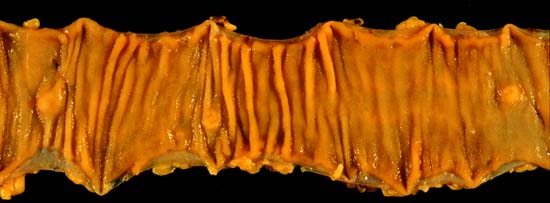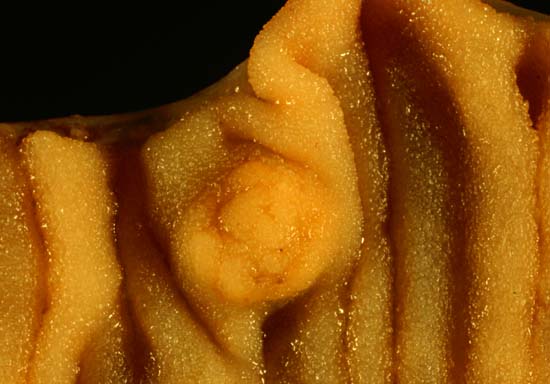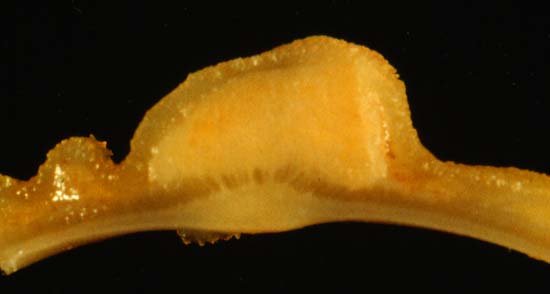Multiple Carcinoid Tumors
of the Small Bowel

The patient from which these specimens were removed was a young man who presented with symptoms referable to the lower intestinal tract. Colonoscopy was negative, but the endoscopist's peek up into the terminal ileum with the colonoscope disclosed a small mucosal nodule, biopsy of which showed carcinoid tumor. The patient then underwent exploration of the intestine by way of a small-incision, laparoscopy-guided laparotomy. On "running the bowel," the surgeon noted four nodules in addition to the tumor seen on colonoscopy. All were resected as two segmental resections and one wedge resection. The longest segment of the small bowel, shown above en face, has three of the tumors, one near each end, and one slightly left of the midpoint. All five of the tumors were less than 1 cm in greatest dimension.

The medium close-up photo above shows a segmental small bowel resection en face, the long axis of the bowel oriented horizontally in the frame. One of the carcinoids is present centrally. Note that the tumor effaces the mossy, villous surface of the mucosa only to a mild degree.
The photo below shows an extreme close-up of one of the carcinoids cut longitudinally. While partially respecting the mucosal architecture, the tumor demonstrates no reluctance to seep through the dark band of an apparently sieve-like muscularis propria to extensively involve the serosal connective tissues. This is a common growth pattern for carcinoids. Differential growth and/or contraction of the tumor on either side of the muscularis causes the latter to bow inward, as seen in the photo. In more pronounced cases, the bowel may actually show a "kink" readily visible externally.

The photos were taken with a Nikon FE2 and 50-something mm Nikkor macro lens with Elite ISO 100 daylight film and a blue color compensation filter. For the middle photo, I found that shading some the the illumination on one side helped to bring out the villous texture of the mucosa.
Photograph by Ed Uthman, MD. Public domain. Posted 28 Oct 99
[Back to image table of contents]
[To Ed Uthman's Home Site]
for more original
resources in pathology and laboratory medicine